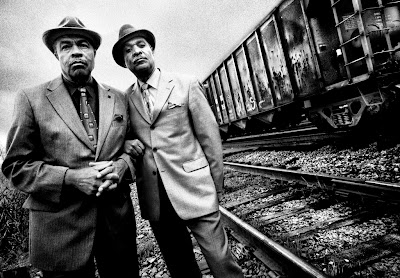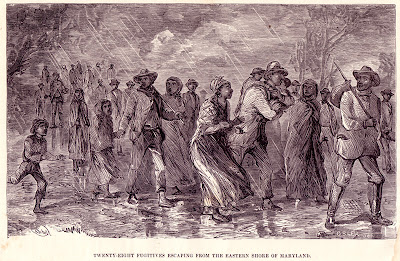 The New-York Historical Society has a number of exhibits and programs planned for Black History Month. All exhibitions are presented at the New-York Historical Society 170 Central Park West, New York, N.Y., unless otherwise noted. Phone (212) 873-3400 or visit www.nyhistory.org for more information.
The New-York Historical Society has a number of exhibits and programs planned for Black History Month. All exhibitions are presented at the New-York Historical Society 170 Central Park West, New York, N.Y., unless otherwise noted. Phone (212) 873-3400 or visit www.nyhistory.org for more information.
THIRTEENTH AMENDMENT SIGNED BY LINCOLN
February 1 through April 1, 2012
The New-York Historical Society displays a rare handwritten copy of the Thirteenth Amendment to the Constitution–the measure that abolished slavery—signed by President Lincoln himself. The document, which was recently acquired by David Rubenstein, managing director of The Carlyle Group, will be on loan to the New-York Historical Society until April 1, in the new Robert H. and Clarice Smith New York Gallery of American History.
FREEDOM NOW: PHOTOGRAPHS BY PLATON
Until April 29, 2012
This installation of large-scale images by the celebrated photographer Platon, gives the historic struggle of the 1950s and 1960s a stirring contemporary presence. Julian Bond—statesman, professor, writer and a leader in the Civil Rights movement—has written a personal introduction to the exhibition. Among the subjects of the photographs are the Little Rock Nine, whose attempt to enter Little Rock Central High School in 1957 became a national cause celebre- Joseph A. McNeil and Franklin E. McCain, participants in the 1960 Greensboro lunch-counter sit-in- Southern Christian Leadership Conference members Joseph Lowery, Fred Shuttlesworth, C.T. Vivian and Andrew Young- Student Non-Violent Co-ordinating Committee leaders James Lawson, Robert Moses and Diane Nash- Chris and Maxine McNair, parents of Denise McNair, murdered in the bombing of Birmingham’s 16th Street Baptist Church- Black Panthers Kathleen Cleaver, Emory Douglas and Bobby Rush- Muhammad Ali- Harry Belafonte- Congressman John Lewis- and Jesse Jackson, Sr.
REVOLUTION! THE ATLANTIC WORLD REBORN
Until April 15, 2012
The path-breaking exhibition Revolution! The Atlantic World Reborn, is the first exhibition to relate the American, French and Haitian struggles as a single global narrative. Spanning decades of enormous political and cultural changes, from the triumph of British imperial power in 1763 to the end of the Napoleonic wars in 1815, Revolution! traces how an ideal of popular sovereignty, introduced through the American fight for independence, soon sparked more radical calls for a recognition of universal human rights, and set off attacks on both sides of the Atlantic against hereditary privilege and slavery. Texts and audio guides are in English, French and Haitian Kreyol. Highlights on view: the original Stamp Act as it was passed by Parliament in 1765, setting off the riots that led to the American Revolution, on loan from the Parliamentary Archives, London, displayed for the first time outside the U.K. the only known surviving copy of the first printing of the Haitian Declaration of Independence (1804, National Archives, London), recently discovered and exhibited here to the public for the first time.
Napoleon’s authorization to French negotiators to sell the Louisiana Territory to the United States (1803, New-York Historical Society), as a direct consequence of the Haitian rebellion
THE BATTLE FOR CIVIL RIGHTS
Thursday, February 16, 6:30 PM
David Levering Lewis, Khalil Gibran Muhammad (moderator)
Location: Robert H. Smith Auditorium at New-York Historical Society, 170 Central Park West
In this powerful program, two experts reflect on the successes and setbacks in the struggle for civil rights and the changing ways in which the story of the Civil Rights Movement is told, from early writers and activists like W.E.B. DuBois, to the turbulent years of the 1950s and ’60s, to the present. Presented in conjunction with the exhibition Freedom Now: Photographs by Platon. A collaboration with the Schomburg Center for Research in Black Culture.
MEET AUTHOR MAIRA KALMAN—LOOKING AT LINCOLN
President’s Day, Monday February 20, 2012, 1 pm
Award winning artist and author, Maira Kalman, reads from the historical gem Looking at Lincoln. From his boyhood in a log cabin to his famous presidency and untimely death, Kalman shares Lincoln’s remarkable life with young readers. Her charming text and bold artwork make history come alive in a fresh and exciting way.
HISTORY DAYS PRESIDENT’S’ VACATION WEEK
February 20 – 24, 2012
Show off your presidential history skills at our daily family quiz show- drop in for some art making, or join our presidential history scavenger hunt. Best for ages 4 – 14. No preregistration required. Free with museum admission.
Family Presidential History Quiz, 2 pm
Where did George Washington take his first oath of office? Team up, sharpen your pencils, and enter our family quiz! Prizes for participation and grand prizes for high-scorers.
Presidential Art making, 1 – 4 pm
Make and decorate your own election button or poster.
Join the Hunt! Presidential Scavenger Hunt, 11 am – 4 pm
We don’t know if George Washington had a cat, but we do know he had a cot and we’ve got it! Find amazing memorabilia when we let you loose in the museum looking for everything presidents! Prizes for participation, and everyone can enter our Liberty the Dog raffle!
Living History Days: 1st RHODE ISLAND REGIMENT (CONTINENTAL)
Sunday, February 5 and February 19, 2012 11 am – 5 pm
As one of the earliest regiments in America to actively enlist African Americans, the 1st Rhode Island Regiment was assembled into service in late 1776 and early 1777. The Regiment fought in the battle of Newport in 1778, spent the infamous winter at Valley Forge, and participated in the Yorktown campaign without receiving any post-war compensation for their efforts. Since 2002, the 1st Rhode Island re-enactors have portrayed the regiment by recreating battles and encampments and presenting programs to audiences in an attempt to educate them about the role of African-Americans in the war effort.
Photo: Platon for The New Yorker, Emmett Tills’ cousins: the Reverend Wheeler Parker, Jr. and Simeon Wright, November 2009. Light jet print. Courtesy of the artist.
 On Sunday, February 26 at 4:00 pm, Historic Huguenot Street (HHS) is presenting a special talk, The Missing Chapter, about the lives and working conditions of African-Americans in the Hudson Valley region during the colonial and antebellum periods.
On Sunday, February 26 at 4:00 pm, Historic Huguenot Street (HHS) is presenting a special talk, The Missing Chapter, about the lives and working conditions of African-Americans in the Hudson Valley region during the colonial and antebellum periods.








